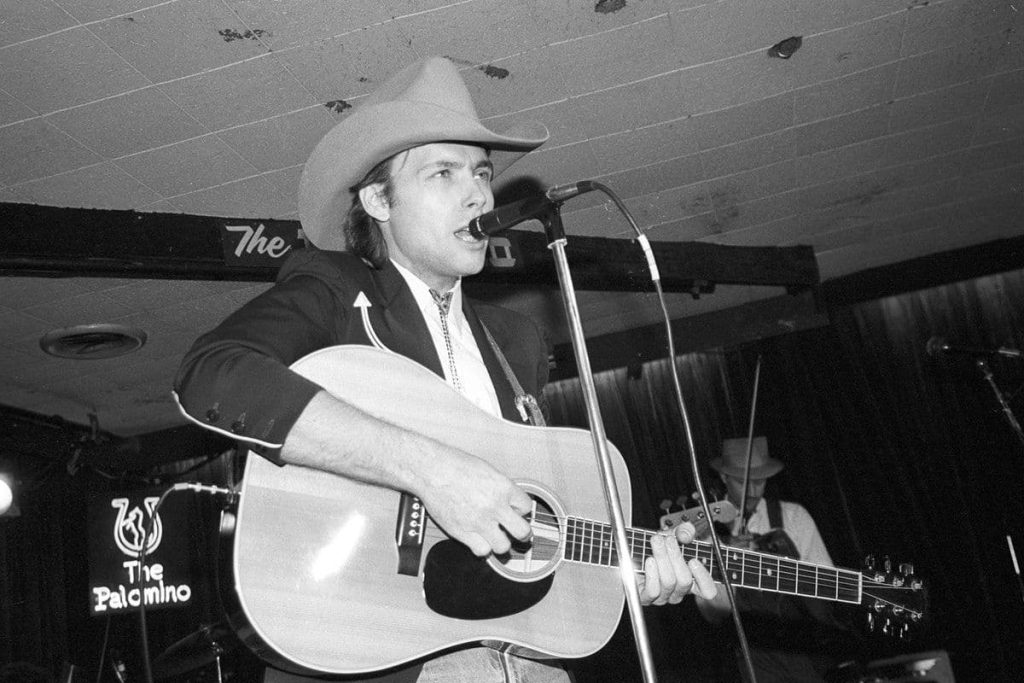
A Heartbreak Anthem Wrapped in Twang and Chrome
Ah, “Guitars, Cadillacs,” the very name conjures up images of neon-lit honky-tonks, the scent of stale beer and cigarette smoke, and the bittersweet ache of a love gone wrong. Released in the autumn of 1986, this signature tune by the one and only Dwight Yoakam wasn’t just a song; it was a statement. It roared up the Billboard Hot Country Singles chart, peaking at a respectable number 7, signaling a seismic shift in the landscape of country music. In an era leaning heavily towards slick, pop-infused sounds, Yoakam defiantly planted his cowboy boots firmly in the traditions of Bakersfield honky-tonk, yet with a contemporary swagger that was undeniably his own.
The story behind “Guitars, Cadillacs” is as authentic as the twang of Yoakam’s Telecaster. Penned by Yoakam himself, this track wasn’t some Nashville committee creation; it sprang from the heart and soul of a Kentucky-born artist who had spent years honing his craft in the vibrant but often overlooked Los Angeles country scene. It was a testament to his unwavering vision, a declaration that real country music, with its tales of heartache, hard living, and honky-tonk heroes, still had a vital place in the American songbook. The song served as the title track to his debut full-length album, “Guitars, Cadillacs, Etc., Etc.,” an album that would go on to become a cornerstone of the neo-traditional movement, paving the way for a resurgence of classic country sounds.
At its core, “Guitars, Cadillacs” is a timeless narrative of love lost and the lingering ghosts of what once was. The protagonist finds himself haunted by the memories of a woman who has moved on, leaving behind only the tangible reminders of their shared past – the guitars that once played their songs, the Cadillac that carried them down dusty roads. The lyrics paint a vivid picture of a man grappling with the emptiness her absence has created, each verse a melancholic reflection on the dreams they shared and the promises that were broken. The recurring imagery of guitars and Cadillacs isn’t merely about material possessions; they symbolize a lifestyle, a shared identity that has now been fractured. The guitars represent the music that bound them together, the soundtrack to their romance, while the Cadillac signifies the freedom and the journey they embarked on as a couple. Now, these very symbols serve as poignant reminders of what he has lost.
What made “Guitars, Cadillacs” so instantly captivating was its masterful blend of classic country elements with a fresh, modern energy. Yoakam’s distinctive vocals, with their high lonesome sound and Kentucky drawl, were instantly recognizable. The driving beat, the prominent Bakersfield-style electric guitar riffs courtesy of the legendary Pete Anderson, and the subtle undercurrent of rockabilly energy created a sound that was both familiar and thrillingly new. It was a sound that resonated deeply with those who yearned for the authentic sounds of country music’s past, while simultaneously appealing to a new generation of listeners who appreciated its raw honesty and undeniable cool.
Beyond its immediate impact on the charts, “Guitars, Cadillacs” has endured as a beloved classic, a testament to the power of genuine artistry and unwavering commitment to one’s roots. It remains a staple in Dwight Yoakam’s live performances, and its influence can still be heard in the music of countless contemporary country artists who have followed in his trailblazing footsteps. It’s a song that takes us back to a time when country music felt a little rougher around the edges, a little more steeped in tradition, and a whole lot more real. So, let the needle drop once more on this timeless track, and let the memories flow.